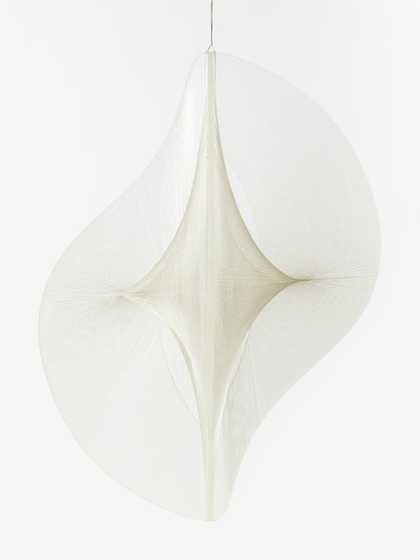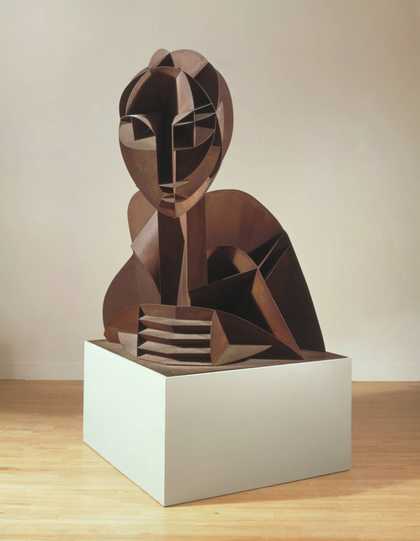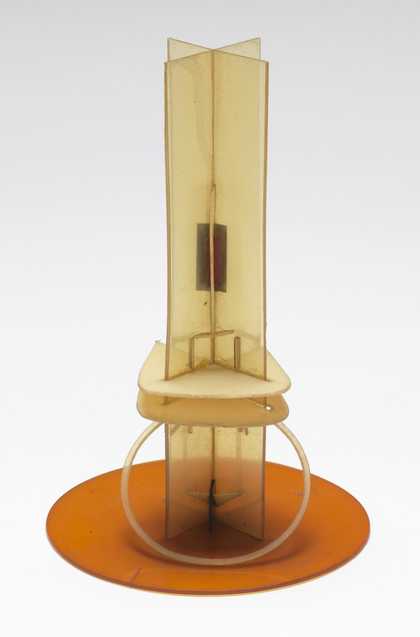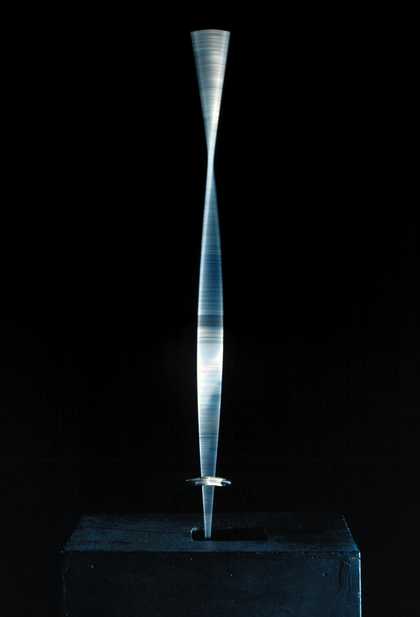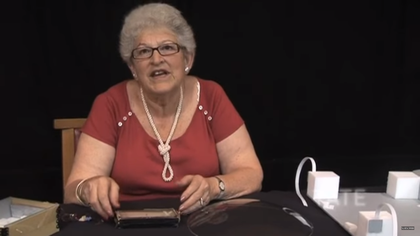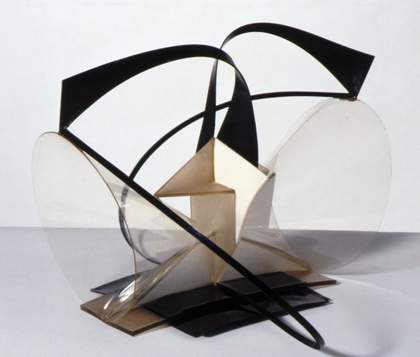Naum Gabo was one of the pioneering artists of his time. Born in Russia, he became key to developments in international modern art following the First World War. Renowned for his sculpture, Gabo was also known as a designer, painter and printmaker. As a theorist and writer, he taught and lectured consistently throughout his career.
Living and working across Europe, Gabo integrated into the artistic scene of cities like Munich, Moscow, Berlin, Paris and London. He influenced a number of artistic movements of the twentieth century. In Moscow, he was involved in the early development of constructivism. In Berlin, he was central to debates around abstract art and collaborated with the Bauhaus school. In Britain he joined communities of modern artists in London and St Ives where his geometric abstraction found inspiration in natural forms. Finally, he settled in Connecticut in the United States after the Second World War. Gabo gained significant recognition in his late career through publications, lectures and public commissions.
Gabo was at the root of new thoughts and philosophies that emerged in the art world across the twentieth century. He supported the international development of constructivism following his departure from Russia. His legacy has influenced several generations of practitioners across the world including artists and architects working with abstract and organic forms, kinetic and installation artists, and now those thinking about time-based media. Read on to find out about the foundations of his theory.
1) Art should drive social change
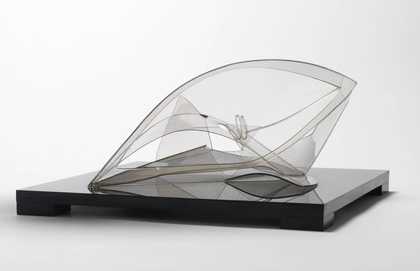
Naum Gabo
Spiral Theme (1941)
Tate
The Work of Naum Gabo © Nina & Graham Williams / Tate, London 2023
Gabo believed art could challenge audiences and make them think about the world in different ways. His practice aimed to communicate themes about modern life and to establish the essential role of art within society.
Gabo was keen that his artistic ideas were not exclusive. He wanted art to be a part of daily life through architecture, film and live arts. He also advocated the use of widely available industrial materials such as glass and sheet metal as well as contemporary innovations including Perspex and nylon cord. He believed art that reflected the concerns of the modern world could bring about social change.
2) Art should be realistic
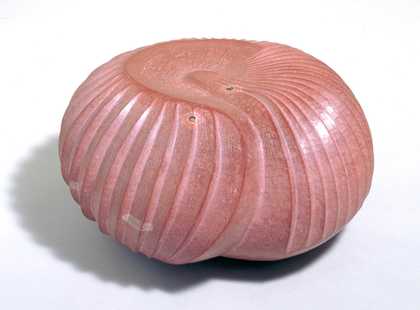
Naum Gabo
Red Stone (1964–5)
Tate
The Work of Naum Gabo © Nina & Graham Williams / Tate, London 2023
2020 marks the centenary of the radical The Realistic Manifesto. Undersigned by his brother, Antoine Pevsner, the manifesto sought to redefine conventional approaches to solid mass, volume, line and colour. Instead, it advocated for the inclusion of space, time and movement.
The decree also proposed art be taken out of galleries and onto the streets to bring it closer to everyday life. Their ideas were communicated through a poster, plastered on official hoardings across Moscow for all to see. The manifesto accompanied an open-air exhibition of paintings and sculptures by Gabo and Pevsner on the city’s busy promenade, the Tverskoi Boulevard.
By ‘realistic’, Gabo intended that art should be grounded by the present. It should express actual experience not an illusion of it. He challenged the evolving styles of modern painting such as Futurism and Cubism, which were gaining influence across Europe. These art forms were concerned with translating a visual experience of real life into two-dimensional representation. Gabo felt they had not gone far enough to reject artistic traditions. He wanted art to be non-representational, dynamic and interactive in order to be universally relevant to the wider public.
3) Art should reflect the time we live in
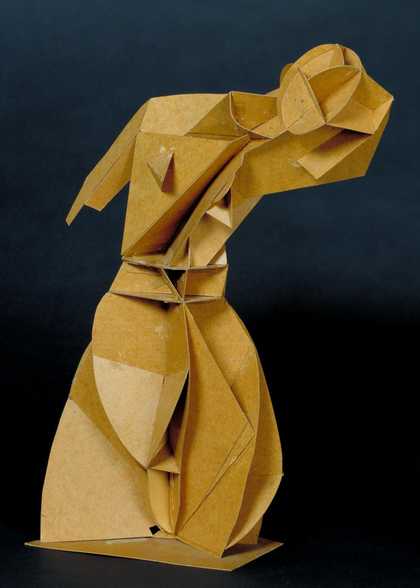
Naum Gabo
Model for ‘Constructed Torso’ (1917, reassembled 1981)
Tate
The Work of Naum Gabo © Nina & Graham Williams / Tate, London 2023
The Realistic Manifesto advocated that art should reflect the modern age and that art should be constructed. Gabo thought, as society progressed, art should to. This would be in accordance with the ethical, scientific and technological developments of the day. In Moscow he taught at the Free Art Studios and in Germany at the Bauhaus school. Both were fostering the new generation of artists engaged with public art, architecture and design.
In the 1930s Gabo moved to Paris to escape the rise of Nazism in Germany. During this time, he joined a group of international abstract artists who were opposed to the ideals of surrealism. They proposed universal harmony in abstract forms as a response to the political and social upheavals of the time. This was captured in Gabo’s text The Constructive Idea in Art published in 1937 after his move to London.
4) Art should be for all
Gabo saw art as a universal form of communication that transcends social, political and cultural barriers. Gabo often conceived his works as schemes for monuments and buildings to be encountered in the public realm. His practice traversed the arts from theatre, film, design and architecture, to sculpture and painting. He chose a variety of artistic practises so his art could reach the widest audience. A number of his sculptural models were turned into large-scale public commissions in Rotterdam, London, Oslo, Princeton and Baltimore. Many of his designs, models and constructions can be also seen in national collections in Russia, western Europe and America.
In the UK his work is permanently represented at Tate in London as well as Tate St Ives in Cornwall. Gabo was an integral member of the community of modern artists there and was based on the Cornish coast throughout the Second World War. After the war he settled with his wife Miriam and daughter Nina in the United States. He gained international recognition through touring exhibitions, public commissions, teaching and writing. Gabo's ideologies have remained central to international debates in abstract art from the 1920s to today.

